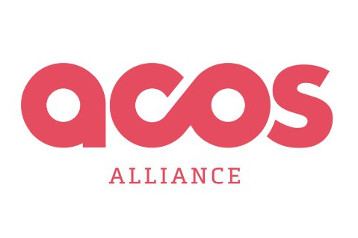 by Elisabet Cantenys and Jason Reich
by Elisabet Cantenys and Jason Reich
This article is reprinted with permission from the online magazine Witness, where it first appeared. Co-authors are Jason Reich, ACOS Alliance Board Member, and Elisabet Cantenys, Executive Director, ACOS Alliance.
Related: Read about the OPC’s Donation for Hostile Environment Training in Beirut here >>
Over the last two decades, thousands of journalists around the world have benefited from specialized safety training. Many more still need access to these courses. However, even if we manage to train them all, we won’t get as far as we need to if we fail to bring their editors into the picture.
Editors play a major role in the safety of their journalists – that much is a given. But most editors, even those who have received safety training themselves as journalists, don’t know how to design and implement appropriate safety policies and protocols. In traditional broadcast newsrooms, the oversight of safety security policies has always been with dedicated security and risk teams. However, many news organizations no longer have those specialized (and expensive) teams, so the tasks of security have fallen to editors and news managers. They are the ones who commission and sign off on risky stories; they are the ones who will need to pick up the phone when something goes wrong on an assignment.
At the ACOS Alliance, we realised very early on that there is a desperate need for a specialized safety training for editors, especially as our industry inextricably shifts to a model that relies increasingly on freelancers – a reliance perceived (wrongly) as a form of risk mitigation, as the freelancer is expected to assume all responsibility for their safety. Through our safety workshops and training sessions, we are building up the capacity of editors to learn how to commission dangerous assignments, contribute towards creating a solid security protocol for their news organization and increase awareness of their duty to care for their journalists – both legally and ethically. We also believe that safety is within reach of the editorial team, and doesn’t need to involve expensive dedicated risk teams.
ACOS Alliance workshops are centered on providing editors with easy wins and affordable solutions that they can bring back to their newsrooms, as well as practical tools and habits that will have an immediate impact. For example, many editors know how to establish a check-in procedure with a reporter on assignment, but how many editors know what to do and who to call if those check-ins are missed? As many seasoned security advisors will tell you, it happens all the time. Knowing how to create a proper “escalation tree” gives editors and news managers a template to act on.
Our emphasis is on prevention and preparation. What needs to be in place beforehand? If a commissioning editor is not well prepared, it may come down to a seasoned freelance journalist to raise the need for a communications plan and insurance, or safety equipment and training. Unprepared editors may not see the relevance of these. Sometimes they may not be familiar with their news organization’s policy and protocols, or don’t know how to apply them. In the worst case scenario, there aren’t even any in-house safety protocols to refer to.
Through the workshops, we have also learned that many news organizations have poor safety policies and protocols in place. Despite being essential to any newsroom, too often we hear that – to the extent safety policies and protocols do exist—they are based on informal discussions and agreements, and most certainly don’t include a clear framework for working with freelancers, fixers, and other contractors. Also, these protocols rarely incorporate lessons learned based on evaluating what worked and what didn’t after completing an assignment. It has prompted us to create the News Organizations Safety Self-Assessment, one of the materials most welcomed by workshop participants, and it’s now also available in Spanish. (Soon to come in French and Arabic.)
We have also learned that commissioning editors without field experience are particularly struggling and can be the weakest link. However, experienced editors must also contend with the changing nature of threats and a reliance on freelance journalists. Our workshops facilitate a candid peer-to-peer conversation about the dilemmas and vulnerabilities faced by editors. Here’s a classic example:
Would you take a story by a freelancer you don’t know pitching from a dangerous location?
Often we see a split room. We help workshop participants to articulate a criteria and protocol for whatever they decide. We also highlight the importance of communicating their criteria and protocol with the journalists they work with. This is a very important aspect of their role as an editor.
Having a criteria and a process for ensuring a culture of safety is important. Some editors fear that having a process in place will limit their ability to do their job. Far from it. Good processes enable. Protocols should help facilitate difficult work and decision making. Some also worry protocols will add an extra layer of work away from content production, and this takes us to one of the most important takeaways: Safety should be integrated into content production. For example: Why we are doing this story? Who is doing it? These very journalistic questions have an essential safety dimension, and the simplest questions are often the most relevant. We encourage editors to incorporate safety into their thinking and routine until it becomes second nature.
We are also aware that by reaching out to editors, we are impacting so many journalists on the ground. Building their capacity is cost-effective and it takes us a few steps closer to embracing a culture of safety.
